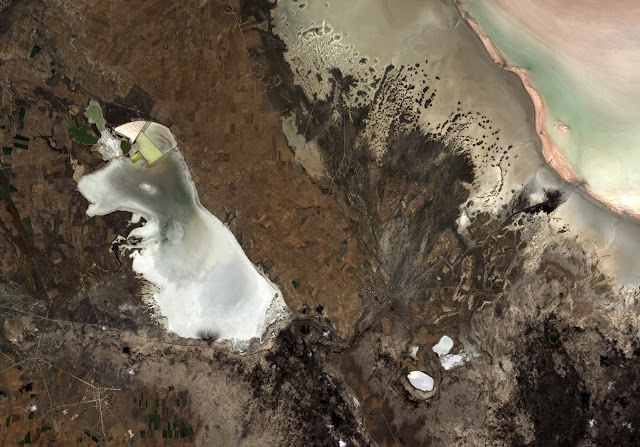This ALOS image was acquired over Anatolia’s dry, central plateau in Turkey. On the left side we can see the whole of Lake Tersakan, with part of Lake Tuz in the upper right corner.
Lake Tuz is Turkey’s second largest lake, as well as one of the largest saline lakes in the world. During the summer months, however, the lake water recedes to expose a thick layer of salt.
The bright white surface during these dry summer months has been used by Earth-observing satellites to calibrate their sensors for the color white – much like how you would adjust a camera’s white balance setting.
Japan’s Advanced Land Observing Satellite (ALOS) captured this image on 21 October 2010 with its Advanced Visible and Near Infrared Radiometer type-2 instrument.
This image is featured on the Earth from Space video program.
Photo credit: JAXA, ESA



